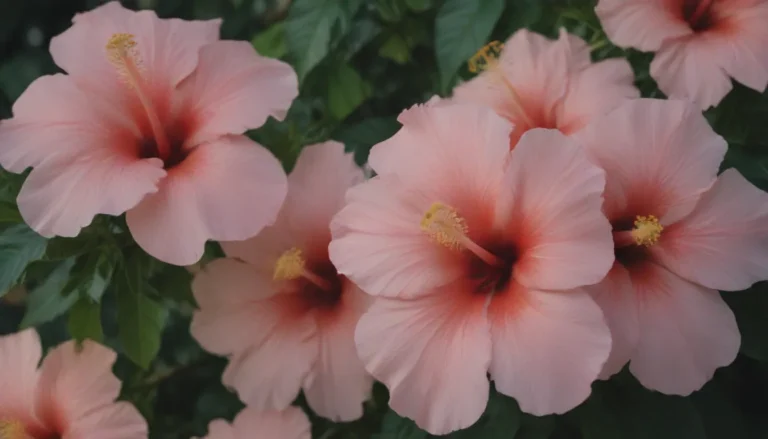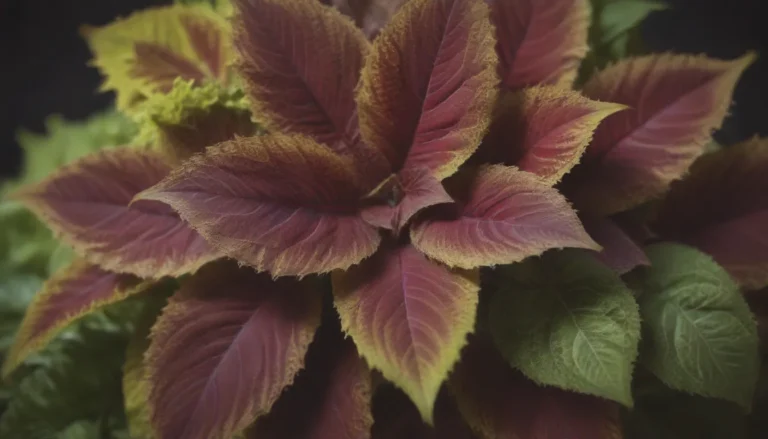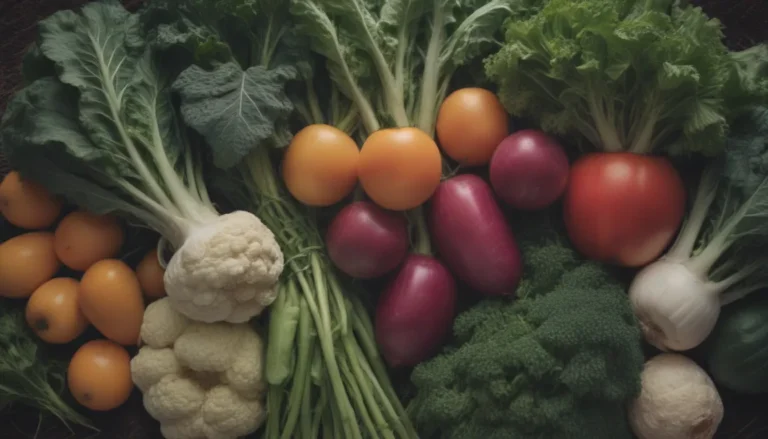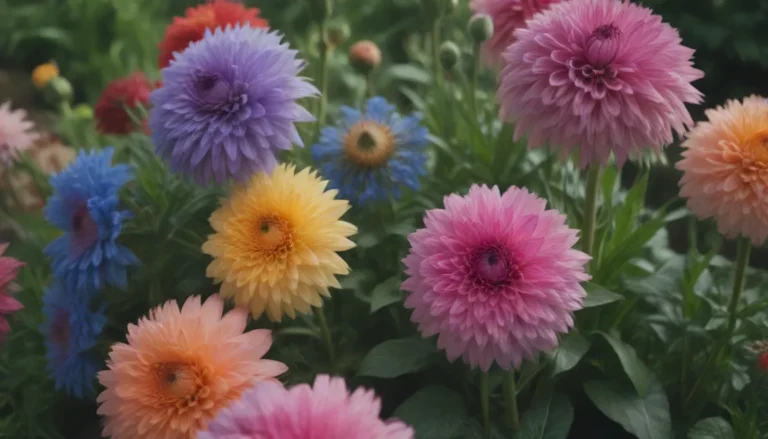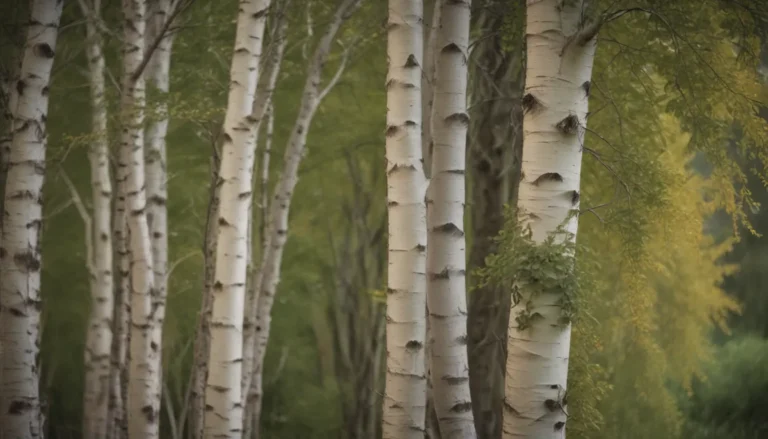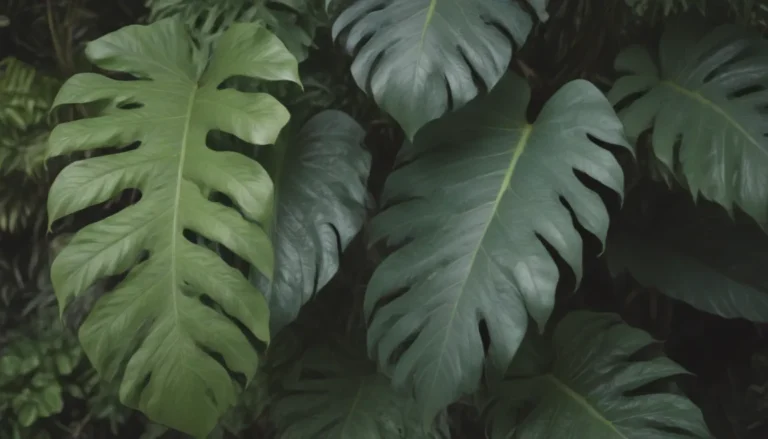Everything You Need to Know About Growing and Caring for Love-Lies-Bleeding

Love-lies-bleeding, also known as Amaranthus caudatus, is a unique plant with tiny blood-red, petal-free flowers that form drooping tassel-like panicles throughout the growing season. This iconic plant, also referred to as tassel flower, thrives in full to partial sun conditions, reaching heights of up to 5 feet. In this in-depth guide, we will explore the benefits and uses of Love-lies-bleeding, how to care for it, different varieties, propagation methods, common pests and diseases, and more. Whether you’re a seasoned gardener or a beginner, this article will provide you with valuable information to help you successfully grow and care for Love-lies-bleeding in your garden.
Benefits and Uses
Love-lies-bleeding seeds have several useful applications. They are edible and are grown as a grain crop in parts of South America. This versatile plant is used in Africa to make beer, porridge, flour, and even as a vegetable in countries like Peru and Ethiopia. Love-lies-bleeding is also gluten-free, making it a nutritious option for those with dietary restrictions. Additionally, the everlasting flowers of Love-lies-bleeding retain their color and can be dried to create attractive arrangements.
Love-Lies-Bleeding Care
To ensure the successful growth of Love-lies-bleeding in your garden, it’s essential to provide the right care and conditions for the plant to thrive. Here are some key care requirements:
Light
Position your Love-lies-bleeding in full sun to part shade after the soil has warmed up. While this plant thrives in warm weather, it appreciates some afternoon shade in exceptionally hot climates. Adequate sunlight is essential for the healthy growth of Love-lies-bleeding.
Soil
Grow Love-lies-bleeding in mildly acidic soil with a pH between 5.5 to 6.5. While it can grow in various soil types, including sandy, loamy, or clay, some gardeners find that it displays the best color when planted in poor soil. If fertilizing the plant, opt for organic fertilizers to promote healthy growth.
Water
While Love-lies-bleeding is fairly drought-resistant, it benefits from regular watering, especially during the seedling stage. Ensure the soil remains evenly moist until the plant becomes established. Once established, Love-lies-bleeding requires minimal watering attention.
Temperature and Humidity
Love-lies-bleeding is not frost-hardy and prefers temperatures above 40 degrees Fahrenheit. It may last as a perennial in frost-free areas. Additionally, the plant is sensitive to day length and may not perform well in northern latitudes. Ensure the soil is warm for quick germination.
Fertilizer
Love-lies-bleeding typically does not require additional fertilization. However, if you have poor soil, organic fertilizer options like fish emulsion or compost can be beneficial for the plant’s growth.
Types of Love-Lies-Bleeding
The Amaranthus genus features a variety of annual and perennial species that easily hybridize. Love-lies-bleeding foliage often comes in pale green, but there are some cultivars with multi-colored leaves. Popular varieties include ‘Tricolor,’ ‘Viridis,’ and ‘Green Thumb,’ each offering unique tassel colors and leaf patterns. Explore different Love-lies-bleeding varieties to add diversity to your garden.
Additional Varieties:
- ‘Coral Fountain’
- ‘Dreadlocks’
- ‘Fat Spike’
- ‘Golden Giant’
Pruning
If the plant’s stalks become floppy during the growing season, provide support with garden stakes. Regularly remove damaged or diseased leaves, stems, or flowers to promote healthy growth. Pruning helps maintain the plant’s overall vigor and appearance.
Propagating Love-Lies-Bleeding
To expand your Love-lies-bleeding collection, consider propagating new plants through seed sowing or root cuttings. Here’s how you can propagate Love-lies-bleeding by cuttings:
How to Grow Love-Lies-Bleeding From Seed
This self-fertile plant is monoecious, meaning it contains both male and female flowers on the same plant. Growing Love-lies-bleeding from seed is a fast process, usually taking between 60 to 110 days from sowing to harvest. Optimal germination occurs between 68 to 70 degrees Fahrenheit, with seeds germinating quickly in warm soil. Harvest seeds before the plant matures to avoid seed loss.
Potting and Repotting
Love-lies-bleeding thrives in large containers, making it an excellent choice for hanging baskets. Due to its long roots, choose spacious containers to accommodate its growth. While Love-lies-bleeding may reach heights of 3 feet in containers, it does not require repotting as it completes its life cycle in a single growing season. Ensure the potting soil is well-draining and the container has ample drainage holes to prevent waterlogging.
Overwintering
Love-lies-bleeding is an annual plant that will not survive frost and cold temperatures. However, the plant self-seeds readily, often producing new plants in the following spring. Allow the previous season’s plant to go to seed for natural regrowth in the coming seasons.
Common Pests and Diseases
Amaranthus caudatus is relatively pest-resistant but may attract aphids, Japanese beetles, snails, and slugs. Maintain a watchful eye for these pests and utilize methods like insecticidal soap or neem oil to manage infestations. Prevent root rot and fungal leaf spot diseases by providing adequate air circulation and avoiding overhead watering.
How to Get Love-Lies-Bleeding to Bloom
Love-lies-bleeding is a reliable bloomer, with flowers appearing from mid-summer to the first frost. Encourage blooming by removing faded floral panicles and deadheading spent flowers. Enhance the aesthetic appeal of your garden with vibrant Love-lies-bleeding blooms.
Bloom Months
- Love-lies-bleeding generally blooms in July.
Bloom Duration
- The blooms last from mid-summer until the first frost.
Appearance and Scent
- Love-lies-bleeding flowers display rich colors like red, purple, golden, and green, with no distinct scent.
Encouraging Blooms
- Remove faded floral panicles to stimulate additional blooms.
- Deadhead flowers to prevent self-seeding.
Common Problems With Love-Lies-Bleeding
Love-lies-bleeding is a low-maintenance plant, but it may encounter some common issues during its growth cycle:
Slow Growth
- Love-lies-bleeding initially grows slowly before picking up speed. Some gardeners may mistake this slow growth for distress, but it is a natural part of the plant’s development.
Wilting
- Wilting leaves indicate a need for deep watering to revive the plant. While Love-lies-bleeding is drought-tolerant, it still requires regular watering to thrive.
To avoid overgrowth, monitor seedlings and remove any excess plants before they establish themselves. Embrace Love-lies-bleeding in your garden to add a unique and visually appealing touch. Whether grown in beds, borders, or containers, this stunning plant will attract butterflies and pollinators, enhancing your outdoor space. Remember that Love-lies-bleeding is an annual plant and will only return in subsequent seasons if self-seeded. Utilize the nutritional benefits of Love-lies-bleeding in various applications, from animal feed to decorative arrangements.
By following these care guidelines, you can cultivate a thriving Love-lies-bleeding plant that adds both beauty and functionality to your garden. Explore different varieties, propagation methods, and bloom-enhancing strategies to make the most of this remarkable plant in your outdoor space. Happy gardening with Love-lies-bleeding!
